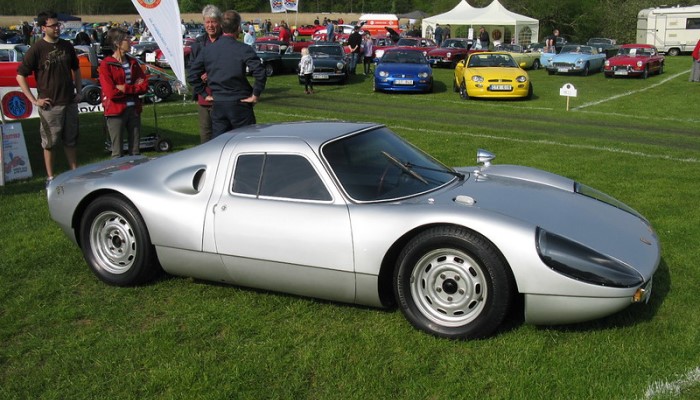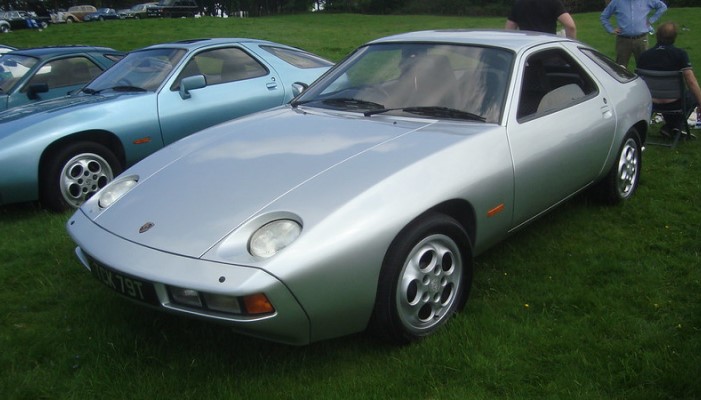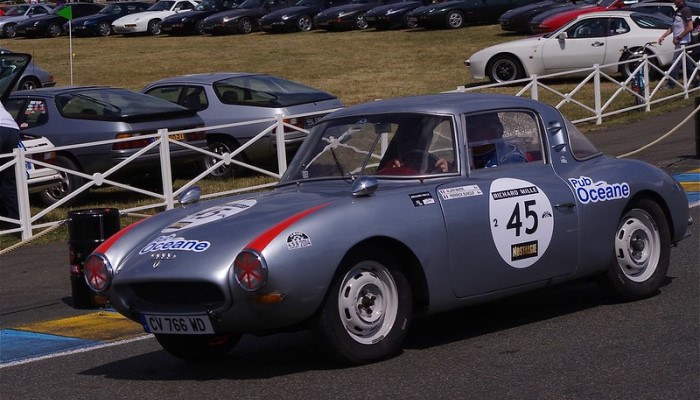Porsche 356
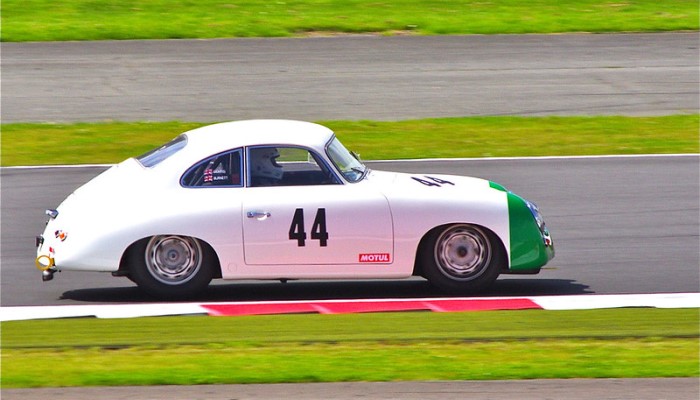
Photo: "1954 Porsche 356 Pre A Coupe" by Dave Hamster
Timeless Elegance and a Sense of Adventure
The design of the new sports car, designated Type 356, began in 1948 in the Austrian village of Gmund. The work was led by Ferry Porsche; his father, Professor Ferdinand Porsche, was imprisoned and could not leave the French occupation zone to help his son.
When building the car, many design elements of a "people's car" were used: the brake system, steering mechanism, non-synchronized four-speed gearbox, front suspension, and, of course, the engine. By the way, the standard engine of the post-war Beetle had a volume of 69 cid (1131 cc).
After increasing the valve diameter and increasing the compression ratio from 5.8 to 7.0, the engine power was 40 hp at 4000 rpm instead of the previous 25 hp. The body was designed, as ten years ago, by Erwin Komenda, and Friedrich Weber, an excellent coachbuilder and longtime friend of the Porsche family, took on the implementation of his plans in metal.
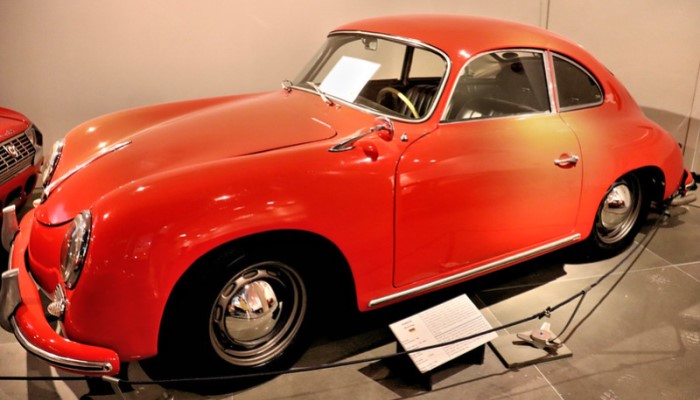
After two months of manual work, the aluminum sheet body was ready. Since there was no talk of any wind tunnel—well, there was no such useful device in Austria—the company had to limit itself to photographing the car rushing along the road from different points.
To identify the directions of air flows, strips of fabric were attached to the body. Fueled with high-quality gasoline, the Type 356 showed a maximum speed of 81 mph (130 kph). Nothing special, of course, but do not forget that the engine developed a power of only 40 "horses."
First Appereance
The first Porsche 356 had a roadster body style, but at the same time, a coupe was being developed. The coupe differed from the roadster not only in the presence of a hard top but also in the frame.
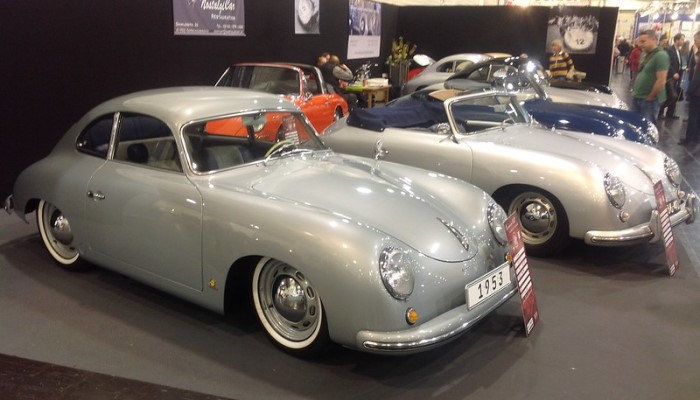
Photo: "Porsche 356 Pre-A Coupe & Cabriolet (1953)" by andreboeni
It was welded from steel box elements instead of pipes, and the increased weight from 590 to 707 kg required the installation of more powerful brakes: mechanical ones with a cable drive were replaced with hydraulic drum ones from Lockheed of England.
On March 17, 1949, at the 19th International Geneva Motor Show, the Porsche 356 coupe and roadster were presented to the general public for the first time.
Production in Stuttgart
To organize full-fledged production, Porsche moved back to its native Stuttgart, where it was sheltered on its premises by the Reutter body shop, thus providing itself with a guaranteed customer. The Porsche 356 began to be equipped with a 79 cid (1,300 cc) engine, which could be found in the Beetle.
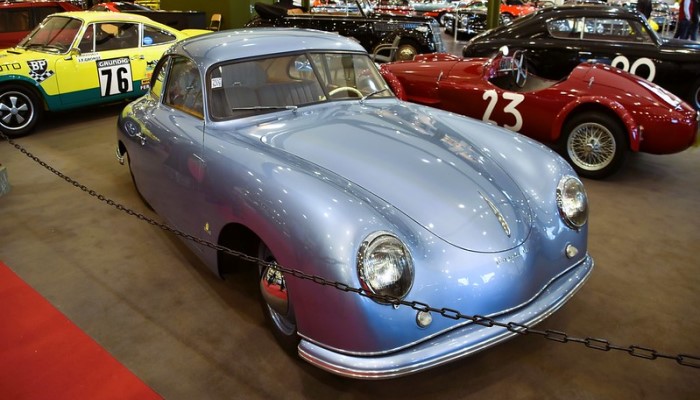
Photo: Porsche 356 1300 (1951)" by usf1fan2
Only Volkswagen engines underwent the most thorough fine-tuning and balancing at Porsche, as a result of which engine assembly by one craftsman took 25 hours.
Reutter treated the production of bodies with full responsibility: manual assembly, sanding the surface with wet sand (particular attention was paid to welds), coating only with high-quality paint and varnish. As a result, the body shone like a New Year's tree decoration.
The Story of the Emblem
An interesting detail: any Porsche car produced before 1952 is easily recognized by the absence of an emblem! There was only a chrome Porsche inscription, and that’s all—in Europe, this was quite enough.
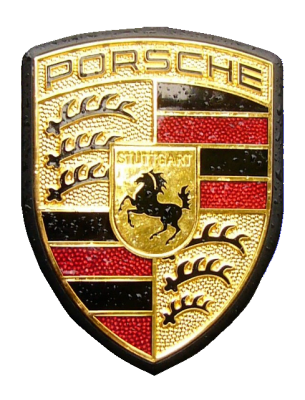
The year 1952 came, and Porsche cars began to be shipped overseas. An American of Austrian origin, Maximilian Hoffman, having received his Porsche dealer license, once had lunch with Ferry Porsche in a New York restaurant and said, "Herr Porsche, your cars are excellent, but for them to sell really well, they need to get their own original emblem."
Ferry Porsche himself understood perfectly well that the emblem was a necessary thing for the car. Therefore, in the evening in his hotel room, Ferry Porsche sat down at his desk and sketched a sketch of the future emblem, which, upon arrival in Germany, was transferred to the design department.
The emblem was the coat of arms of the city of Stuttgart with a rearing bay stallion, placed in the center of the Varangian four-part shield of the Württemberg house, in the first and fourth parts of which there are black stylized images of deer antlers on a gold background, and in the second and third there are alternating stripes of scarlet and black colors. The upper part of the emblem is decorated with the Porsche inscription.
Today's Market
The value of a Porsche 356 can vary significantly depending on several factors. These include the model year, condition, mileage, rarity, and any special features or historical significance.
Due to the ever-changing vintage car market, it is recommended to consult reputable sources such as classic car dealerships, auction houses, or collector car price guides to obtain the most accurate and up-to-date estimation of a Porsche 356's worth.
Keep in mind that prices can range from 70,000 to 700,000 of dollars, with some extremely rare and well-preserved examples fetching higher prices.

Unique Car Zone Team
A group of several fans of everything that moves on four wheels, a few article creators, a couple of marketing strategists, designers, web developers, and lots of coffee.




